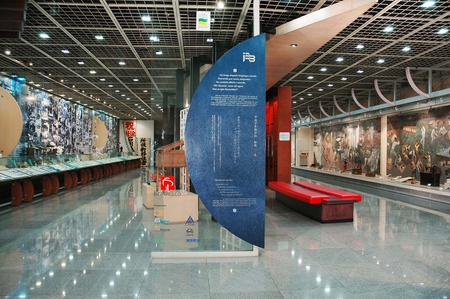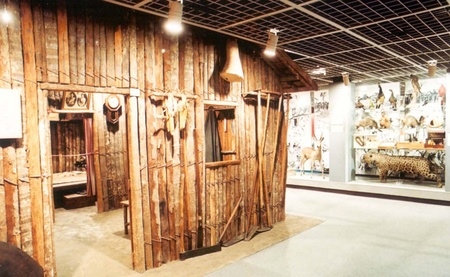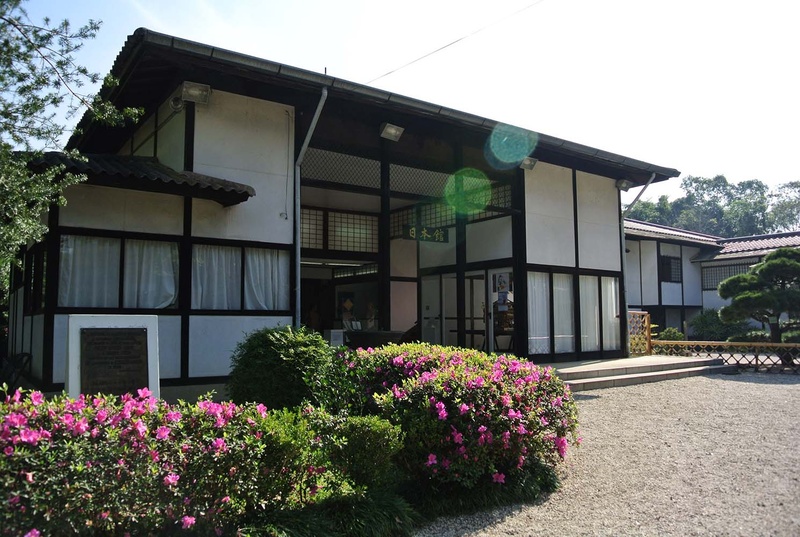Exhibition spaces are important for keeping Japanese culture alive - in addition to the history of immigrants, responsible for bringing their customs to Brazil - and also for disseminating it. In the city of São Paulo, the Japanese Pavilion and the Historical Museum of Japanese Immigration in Brazil are worth mentioning, managed by the Brazilian Society of Japanese Culture and Social Assistance - Bunkyo.
Japanese Pavilion, the symbol of Brazil-Japan friendship
Located within Ibirapuera Park, the Japanese Pavilion was built by the Japanese government and the Japanese-Brazilian community as a symbol of friendship between Brazil and Japan and donated to the City of São Paulo in 1954, as part of the celebration of the IV Centenary of the city's founding. .
The project was based on the Katsura Palace, the Emperor's former summer residence, built at the beginning of the 17th century. In addition to traditional Japanese architectural techniques, materials brought from Japan were used, such as wood and mud from Kyoto to give texture to the walls.
The Japanese Pavilion has four rooms. The largest is the garden, inspired by traditional Japanese concepts, which brings together around 20 varieties of typical plants and flowers, such as green tea, Japanese plum ( ume ) and Ginkgo biloba ( ichyo ). There are also three species of cherry trees ( sakuras ), Okinawa, Himalaya and Taiwan, which bloom in July and make the garden even more beautiful.
The most beautiful and fun space is perhaps the Carp Lake, which received the first colorful carp ( nishikigoi ) in the early 1970s, due to the initiative of the Brazilian Nishikigoi Association and exchanges with breeders from different Japanese provinces. Visitors can enjoy the tour and buy food to feed the approximately 320 carp that live in the lake.
The Tea Room or Chashitsu is the place dedicated to the practice of the tea ceremony. The tea ceremony is a traditional ritual performed with matcha , pulverized green tea originating in China.
The Exhibition Hall presents the permanent collection of Japanese art made up of original pieces, including ceramics, wooden sculptures and replicas of national treasures, donated and consigned by the government of Japan, as well as entities, companies and personalities.
This is a valuable collection, because there are pieces very similar to those I saw in museums in Japan. It is important to preserve them in Brazil, mainly because it is where the largest community of Japanese descendants is located.
When I was at the Japanese Pavilion, I felt like I was in Japan, not only because of the architecture, but also because it is a place that conveys peace and tranquility.

Japanese Immigration Museum preserves history
The Historical Museum of Japanese Immigration in Brazil (MHIJB) was inaugurated on June 18, 1978, as the great celebration of the 70th anniversary of Japanese immigration in Brazil. Responsible for the initiative, Bunkyo aimed to record and preserve everything that could show the lives of Japanese immigrants in Brazil. There are three floors located in the Bunkyo Building, in the Liberdade neighborhood: the 7th, 8th and 9th floors.

Built in 1978, the first two floors bring together documents and objects that show the history since the signing of the Treaty of Friendship, Commerce and Navigation between Brazil and Japan, in 1895; the arrival of the first immigrants in 1908; the colonial centers that emerged from 1913 until polyculture.
Some items on the 7th floor, which for me is the most interesting, caught my attention. There, visitors have the opportunity to see the reconstruction of an immigrant hut, the first precarious dwelling that served more as a shelter for families who worked on farms. On this floor there are also replicas of the ships Kasato Maru, the first to arrive in the country with 781 immigrants, and Brasil Maru, which made three trips here.

The 8th floor also shows the history of journalistic publications and is where there is a totem available to consult the records of the families that came, with the province of origin, year and ship. In April this year, due to a modernization project at the Museum, the floor gained a new space, which addresses the history of immigrants in the period between 1930 and 1940.
The 9th floor was opened in November 2000 and is dedicated to the 50th anniversary of the Second World War. I identified some things, such as the names of Japanese companies that came to Brazil, changes that occurred within the Nikkei community and the contribution of descendants to Brazilian society.
Furthermore, on the 3rd floor are located the library and collection of the Historical Museum of Japanese Immigration in Brazil, which have more than 5 thousand objects, 28 thousand written documents (including diaries, books, newspapers and magazines) and around 10 thousand photographs related to Japanese immigrants.
A visit to the Museum is a walk through history and a living lesson using the most varied objects - documents, photos, replicas and original pieces received through donations. Its collection is as rich as that of the Japanese Pavilion, which is smaller, but together they complement each other in the learning experience of Japanese history and culture.
© 2015 Tatiana Maebuchi







